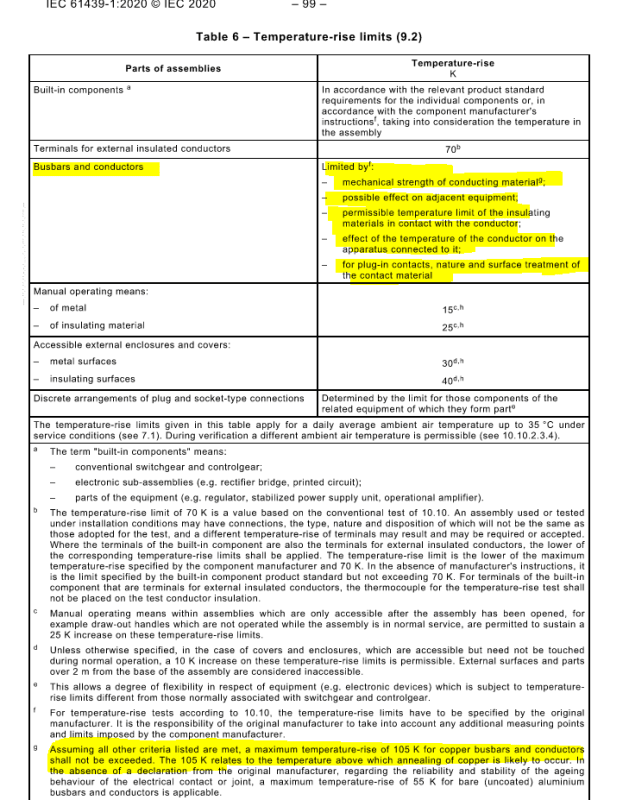NickParker
Electrical
The specification says, " LV Switchgear Bus bar temperature rise shall not exceed 45°C under rated current".
The ambient temperature is around 40°C.
Does it mean maximum permitted temperature rise is only 40 + 45 = 85°C?
Not many local vendors can achieve this? Am I correctly interpreting the specification? as IEC allows temperature rise till 105K
The ambient temperature is around 40°C.
Does it mean maximum permitted temperature rise is only 40 + 45 = 85°C?
Not many local vendors can achieve this? Am I correctly interpreting the specification? as IEC allows temperature rise till 105K

